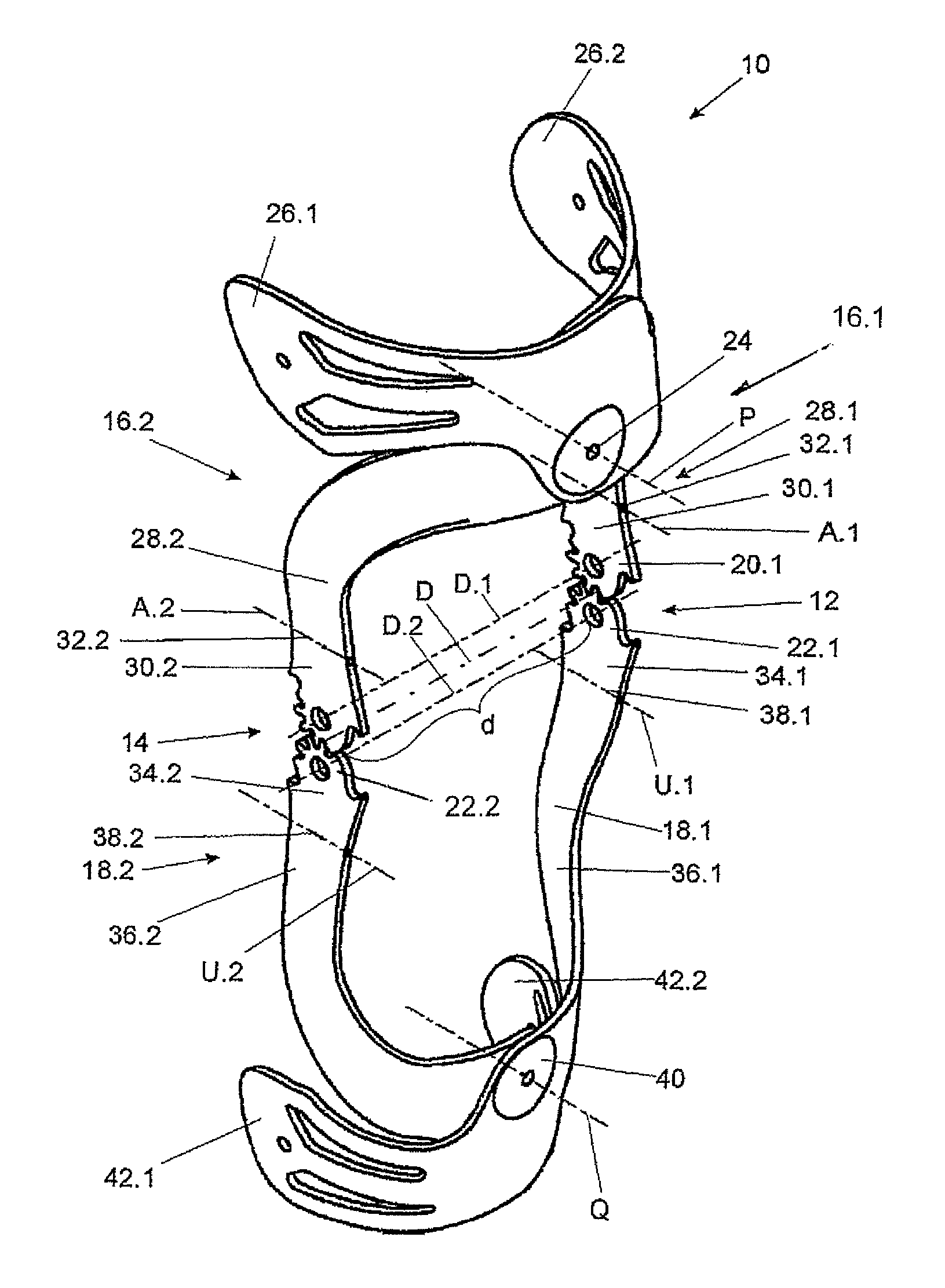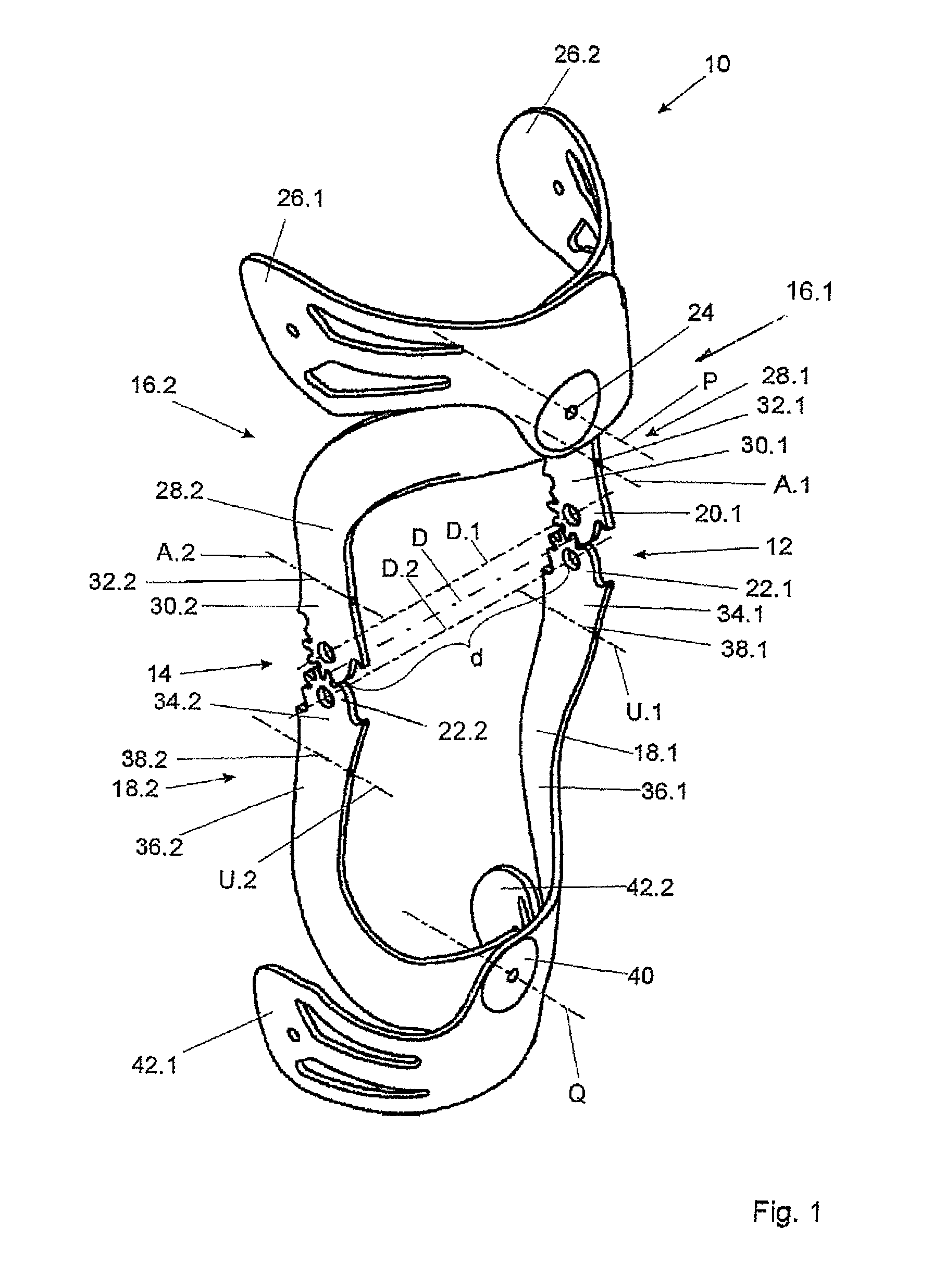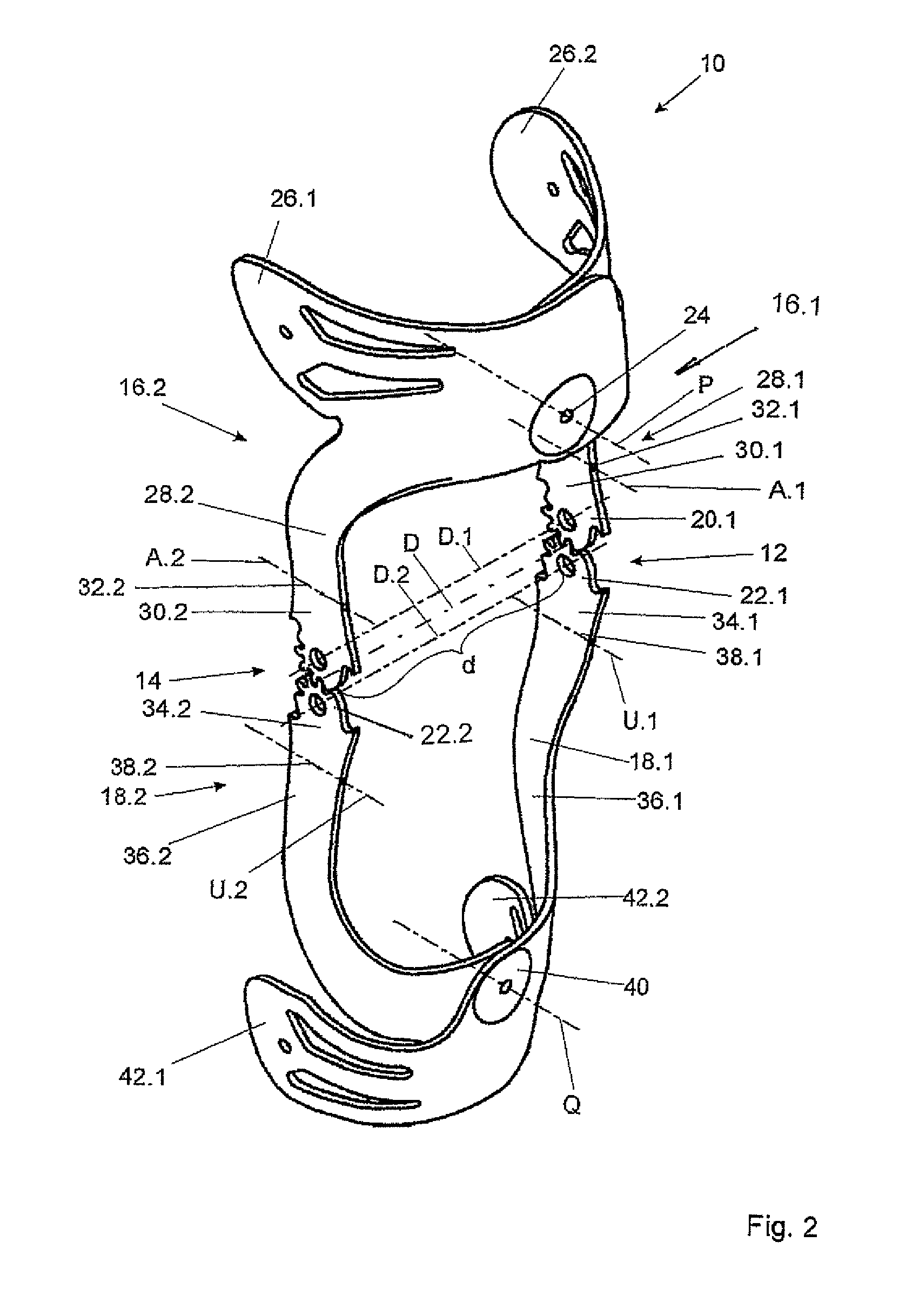Orthosis
a technology of orthosis and spondylosis, which is applied in the field of orthosis, can solve the problems of general swelling, unusability, and inability to adapt quickly and simply, and achieve the effects of saving time both for patients and patients
- Summary
- Abstract
- Description
- Claims
- Application Information
AI Technical Summary
Benefits of technology
Problems solved by technology
Method used
Image
Examples
Embodiment Construction
[0035]In FIG. 1, a knee orthosis 10 is shown with a left-hand load-bearing joint 12 and a right-hand load-bearing joint 14. The left-hand load-bearing joint 12 connects a left-hand proximal panel 16.1 to a left-hand distal panel 18.1 and is designed as a polycentric rotary joint. The left-hand load-bearing joint 12 comprises a proximal joint head 20.1 and a distal joint head 22.1, which each have teeth. The teeth mesh with one another when the proximal panel 16.1 pivots relative to the distal panel 18.1. The proximal and distal panels 16.1, 18.1 pivot relative to each other on a time-variable load-bearing joint pivot axis D, which always extends parallel to connecting axes D1 and D2 that connect the midpoints of the two proximal joints heads 20.1, 20.2 of the two distal joint heads 22.1, 22.2. to each other.
[0036]The proximal panel 16.1 and the distal panel 18.1 have a flat, strap-like configuration and are produced by injection molding. The knee orthosis 10 additionally comprises a...
PUM
 Login to View More
Login to View More Abstract
Description
Claims
Application Information
 Login to View More
Login to View More - R&D
- Intellectual Property
- Life Sciences
- Materials
- Tech Scout
- Unparalleled Data Quality
- Higher Quality Content
- 60% Fewer Hallucinations
Browse by: Latest US Patents, China's latest patents, Technical Efficacy Thesaurus, Application Domain, Technology Topic, Popular Technical Reports.
© 2025 PatSnap. All rights reserved.Legal|Privacy policy|Modern Slavery Act Transparency Statement|Sitemap|About US| Contact US: help@patsnap.com



